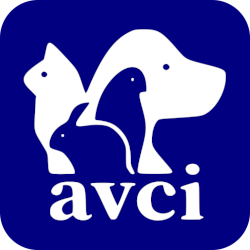SECTION 1: ORGANIZATIONAL STRUCTURE
AVCI operates as a corporate entity governed by a structured hierarchy:
Corporate Governance
• Board of Directors
• Head Veterinarian & President (Dr. Gerald Aycardo)
• Practice Manager
• Managing Veterinarians (Branch Heads)
• Associate Veterinarians
• Supervisors
◦ Veterinary Technicians Supervisor
◦ Veterinary Assistants Supervisor
◦ Veterinary Receptionists Supervisor
• Veterinary Staff:
◦ Veterinary Technicians
◦ Veterinary Assistants
◦ Veterinary Receptionists
I. Purpose
The purpose of this policy is to define the roles and responsibilities of all job positions within Aycardo Veterinary Center Inc. (AVCI) to ensure efficient workflow, clarity in duties, and compliance with labor laws. Job descriptions serve as an essential tool in hiring, performance evaluation, training, and organizational development.
This policy ensures that AVCI employees understand their roles, reporting structure, and expectations while complying with relevant labor laws in the Philippines.
II. Legal Basis
This policy aligns with the following Philippine labor laws and regulations governing employment and corporate governance:
1. The Labor Code of the Philippines (PD 442) – Establishes guidelines for employment contracts, duties, and labor rights.
2. Republic Act No. 11232 (Revised Corporation Code of the Philippines) – Regulates corporate entities, board responsibilities, and managerial roles.
3. Republic Act No. 11058 (Occupational Safety and Health Standards Act of 2018) – Mandates workplace safety for veterinary professionals handling animals.
4. Republic Act No. 9482 (Anti-Rabies Act of 2007) – Requires proper veterinary handling and reporting of rabies cases.
III. Governance & Organizational Structure
AVCI operates as a corporate entity with a structured hierarchy to ensure seamless veterinary care and administrative management. The organization consists of board members, with the current president, Dr. Gerald Aycardo, also serving as the Head Veterinarian.
The operational flow of authority is as follows:
1. Head Veterinarian → Oversees entire veterinary operations.
2. Practice Manager → Oversees general administrative and operational functions.
3. Managing Veterinarians → Oversee individual branches and manage associate veterinarians.
4. Associate Veterinarians → Assist and report to managing veterinarians while gaining professional experience.
5. Supervisors → Lead specialized veterinary teams.
6. Veterinary Teams → Composed of veterinary technicians, veterinary assistants, and veterinary receptionists.
Supervisor Roles:
• Veterinary Technicians Supervisor – Oversees veterinary technicians assisting in treatments and surgeries.
• Veterinary Assistants Supervisor – Manages veterinary assistants responsible for clinic cleanliness and patient handling.
• Veterinary Receptionists Supervisor – Supervises front desk operations, client relations, and administrative tasks.
IV. Policy on Job Descriptions
1. New Positions – Job descriptions must be developed before hiring for new roles, subject to approval by the HR Director or an assigned Board Member.
2. Job Modifications – Existing job descriptions will be reviewed and updated annually or as needed when job duties significantly change.
3. Performance Review Alignment – Job descriptions serve as the basis for employee performance evaluations and training programs.
The HR Director and Board Members are responsible for ensuring compliance with this policy.
V. Job Descriptions
1. Head Veterinarian (President & Chief Veterinary Officer)
Reports to: Board of Directors
Supervises: Practice Manager, Managing Veterinarians
Role: Leads AVCI’s veterinary operations, clinical standards, and medical protocols.
Responsibilities:
• Oversees all veterinary procedures, policies, and standards within AVCI.
• Ensures compliance with veterinary laws and animal welfare regulations.
• Provides guidance and training to veterinarians and technical staff.
• Handles complex surgical procedures and advanced medical treatments.
• Makes strategic decisions on veterinary services and business development.
2. Practice Manager
Reports to: Head Veterinarian
Supervises: Managing veterinarians, supervisors, administrative and HR teams
Role: Oversees daily clinic operations, human resources, and financial matters.
Responsibilities:
• Manages clinic workflow, staffing, and operations.
• Oversees hiring, employee training, and HR policies.
• Ensures compliance with government labor regulations.
• Coordinates with managing veterinarians to improve clinical efficiency.
• Implements financial policies, cost control, and inventory management.
3. Managing Veterinarian
Reports to: Practice Manager & Head Veterinarian
Supervises: Associate Veterinarians
Role: Oversees the operations of an AVCI branch and ensures high standards of veterinary care.
Responsibilities:
• Diagnoses and treats animals in assigned AVCI branches.
• Supervises associate veterinarians, veterinary technicians, and assistants.
• Ensures compliance with health and safety standards in the clinic.
• Reports operational issues and suggests improvements to senior management.
4. Associate Veterinarian
Reports to: Managing Veterinarian & Head Veterinarian
Role: Provides direct veterinary care while learning advanced skills under a managing veterinarian.
Responsibilities:
• Conducts consultations, diagnostics, and medical treatments.
• Performs minor to moderate surgical procedures under supervision.
• Assists in handling emergency cases and animal health management.
• Engages in continuous learning and professional development.
5. Veterinary Technician
Reports to: Veterinary Technicians Supervisor
Role: Assists veterinarians in surgical, medical, and diagnostic procedures.
Responsibilities:
• Prepares surgical tools, administers anesthesia, and monitors patient recovery.
• Collects and processes lab samples (blood, urine, stool, etc.).
• Administers IV therapy and medications as prescribed by veterinarians.
• Maintains medical records and treatment history of patients.
6. Veterinary Assistant
Reports to: Veterinary Assistants Supervisor
Role: Supports veterinarians and technicians in handling, restraining, and preparing animals.
Responsibilities:
• Ensures clinic cleanliness and disinfection.
• Assists in preparing animals for surgery and treatments.
• Handles basic patient care, feeding, and monitoring.
• Helps in restraining animals during examinations.
7. Veterinary Receptionist
Reports to: Veterinary Receptionists Supervisor
Role: Manages client communication, scheduling, and administrative duties.
Responsibilities:
• Greets clients, schedules appointments, and processes payments.
• Provides basic pet care instructions and educates clients on veterinary services.
• Manages medical records, inventory, and administrative reports.
• Maintains a clean, organized, and professional reception area.
VI. Employment Requirements & Qualifications
VII. Policy Review & Amendments
• This policy will be reviewed annually to reflect operational changes.
• Any modifications will be approved by the Board of Directors and communicated to all employees.
VIII. Compliance & Enforcement
• Employees must adhere to their job descriptions and responsibilities.
• Violations of this policy may result in disciplinary action, including termination.
Legal Protection: AVCI ensures compliance with Philippine labor laws to provide a fair and structured work environment.
Back to Manual of Company Policies.

